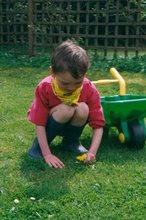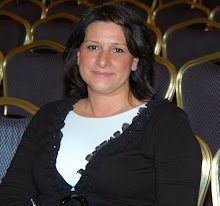
Summer always brings us warmth and a new season full of hope, amazing galore of colours, lights, fragrances, delicious fresh food, new friendships, lots of outdoor activities, barbequing and celebrations.
It is amazing what the sun can do to brighten up our day and our outlook on life.
The summer sun helps to heal and nurture our bodies. The health benefits of the sun have been known since ancient times.
Summer is a time to move freely and sing with joy, time to be filled with love and to give love unconditionally. A time to honour what gives us life and what warms our hearts and minds.
Conductive Education Summer programmes grant us the opportunity to embrace all what summer is about at the Conductive Education Support Centre in the South of England, UK.
We are fortunate that our centre is based in the heart of the New Forest, where ponies are grazing and galloping even on the streets, followed by the sure steps of huge highland cattles.
The local donkeys and wild ponies often visit our local Lloyds Bank and bakery and can be found standing half way in the doorway.
During the summer we have opportunities to meet new children and parents and they all add to our colourful extended family hamlet.
You can often find groups of mums chatting in the car park, attempting to solve the problems of the world, while dads getting their bikes ready for miles of cycle run. Family dogs sniffing the air and hardly can wait to jump out of the cars for their forest run.
Some mums go out together for coffee, or lunch, some have a relaxing massage or a swim at one of the local hotels, some drive off to the forest or to the local beaches with a good book or a magazine, just to be away from it all and have some quiet time for themselves.
For us it is time to have fun, to enjoy ourselves while learning different survival, independence and lots of different social skills.
We have huge debates about life, we make fresh fruit and vegetable juices in the juicer, we prepare and serve our snacks and lunch together, we have early morning outdoor breathing practices.
During these breathing tasks everyone chooses a tree and they practice different breathing techniques while looking at the shapes and colours of the tree and observe the light dancing amongst the branches.
Some task series and games are run outside, even in the rain. Everybody is challenged in many different ways and given opportunities to find special talents and gifts within.
Amongst many others one of the challenges is that the children are encouraged to drink plenty of fresh water instead of sweetened and fizzy drinks.
Parents are asked to bring healthy, nutritious fresh food, no red meat, no sugar and no additives. It is amazing how much difference can be observed within just one or two weeks if they can stick to this during the times they spend away from the centre too.
Children become more energised, awake, and aware and sleep better at night.
The first week is always very hard for the children and the programmes seem to run slow as the children find it hard to focus, concentrate and participate. Even children who are in traditional primary or secondary education find it hard when they are asked to take full responsibility for themselves.
It seems that their attention flickers as most of the time usually they are taken care of so they switch off and don’t think for themselves.
They want to do so many things and so eager to participate, but the planning is missing and they need considerable time spent on paying attention to the details and sequences of their performance.
These children are in fulltime education and spend most of their lives growing up amongst the walls of educational establishments. Highly trained specialists design their curriculum… and even so they know so little about basic, vital and important things.
Their lives have such limited and reduced access to information and experiences that are essential part of life and are necessary to live a dignified life.
When parents choose to enrol their children for one week only there is very limited what one can achieve which will make a real difference in the life of the child and the family.
Children are eager to live up to the expectations of their parents, but this is an incredibly difficult task for them to adhere within a week.
Especially if they never sat on a chair without side supports and straps, if they never asked to adequately participate during snacks and lunchtimes and if they spent most of their time being carried, crawling on the floor or sitting in a wheelchair.
It takes a massive shift of consciousness within the children's mind to see themselves as walkers and not crawlers, to take full responsibility to learnt to sit safely while dividing their attention between many things that are presented within each moment.
Every day when parents arrive to take their children home we tell them what the children have been doing, how they solved problems and what they were capable of during the day. We also show them ways of solutions and also photos, or short video clips, which were taken during the day. We encourage them to reinforce skills at home, which were learnt on the day.
Summer programmes need to be seen as active participation from both the parents and the children. We don’t ask parents to stay and work with their children after the age of three. We conductors facilitate the birth of new solutions and the mastering of oneself, but we ask parents to follow up the functional skills at home, which were achieved.
If you and your child are participating in a Conductive Education Summer Course you might like to consider the following. ♥
Always encourage your child, by talking about the fun sides and the advantages of spending time in a summer camp. All children need preparation, but our children often more sensitive and fearful.
When you drop your child off in the morning please refrain from saying that he, she will not be good today as …whatever reason, fill the gap. Children listen to their parents and perform accordingly. I know it is hard to believe that they listen to you but they do.
If you want your children to learn quicker, ensure that you talk highly about their conductors and teachers in front of them. You might have something to question or complain about, but leave that conversation for adult’s ears only.
Don’t expect that your child would want to learn from someone you might disapprove of, even though you might have a good reason for it.
If your child has prescription glasses don’t for get to bring them.
If children didn’t have breakfast for whatever reason tell the conductors as they wont be able to concentrate with an empty stomach.
Comfortable closing is essential to feel free and unrestricted. Tight garments and skirts for girls hinder performance. Send plenty of change of clothes especially if you are attempting toilet training during the summer course.
Please follow up toilet training at home too. There is no point to attempt toilet training if it is just done during the programmes.
Spend the afternoons and evening relaxing and enjoying together and by practising a few skills which were learned on the day and by finding ways of integarting them into everyday routeens. It helps your child to focus more on the solutions and to tune in more for further learning.
Don’t over tasks your child by spending hours in the swimming pool, or spending hours in crowded shopping centres and attending late night parties. The next day children would be washed out and withdrawn.
Children will be tired mentally and physically and they need time to balance out their energies between activities and adequate rest periods.
Please inform the conductors about changes related to your child, i.e. change of medication during the course, any sleeping pills, sedatives, laxatives, herbal remedies etc. given to your child during the course, possible seizures, changes of behaviour, changes of health, possible emotional problems, possible family problems etc.
To ensure that your child gets the most out of a Conductive Education Summer programme following the above could give you a good start.
photo

by
Adrian Allain

Photo by Chalkie CC
 I am leaving you with a quote from Souza; which was sent to me by one of my best teachers at Petö yesterday.
I am leaving you with a quote from Souza; which was sent to me by one of my best teachers at Petö yesterday.













 "Modern science was born through a violent break with the ancient vision of the world. It was founded on the idea — surprising and revolutionary for that era — of a total separation between the knowing subject and Reality, which was assumed to be completely independent from the subject who observed it. This break allowed science to develop independently of theology, philosophy and culture. It was a positive act of freedom. But today, the extreme consequences of this break, incarnated by the ideology of scientism, become a potential danger of self-destruction of our species.
"Modern science was born through a violent break with the ancient vision of the world. It was founded on the idea — surprising and revolutionary for that era — of a total separation between the knowing subject and Reality, which was assumed to be completely independent from the subject who observed it. This break allowed science to develop independently of theology, philosophy and culture. It was a positive act of freedom. But today, the extreme consequences of this break, incarnated by the ideology of scientism, become a potential danger of self-destruction of our species.

 by
by 
















